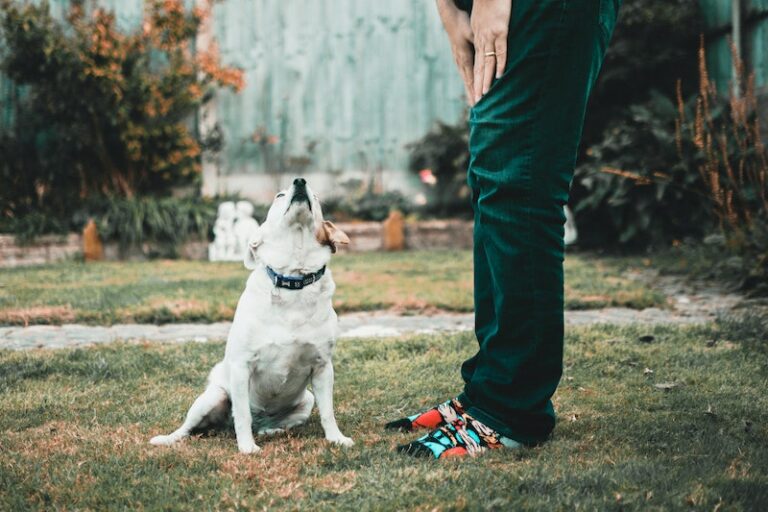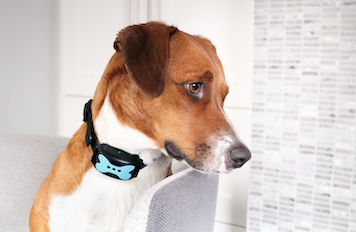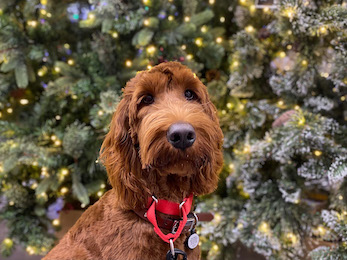Do you ever wonder what your dog is thinking? Dogs primarily communicate nonverbally. Instead, they rely on their body language. Communicating using body language seems to be something innate in dogs or, more likely, a set of beneficial behaviors passed down across generations evolving to reflect what is now our modern dog’s form of communication. For more information on identifying friendly, neutral, or aggressive body language, check out my blog, “Identifying Body Language in Dogs”.
In this blog, I’ll cover what you can do to communicate with your dog and other dogs. Just like with any relationship, clear communication is critical. As it turns out, dogs are not all that complicated, and it can be easy to communicate with them with high reliability. As a Certified Applied Animal Behaviorist and a mom to three dogs, I find it easiest to focus on my body language. Body language includes facial expressions, movement, body weight, speed of movement, angle, and positioning. Lastly, I rely on my voice to communicate with my dogs and client dogs.
Body Language
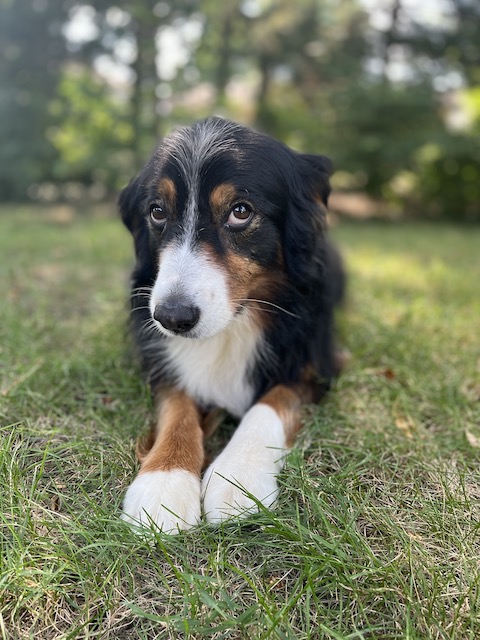
Facial expressions
Dogs use facial expressions to communicate, and you can do the same. Keeping your face soft and in a generally happy demeanor will confirm that you are not a threat. For dogs who are very comfortable with an individual or are overly friendly with less familiar people, prolonged, happy eye contact could signal engagement– getting ready to take a walk, go swimming, or signaling mealtime! If your dog is generally more standoffish or even fearful of you or other family members, avoid long periods of eye contact and have guests do the same. Prolonged eye contact, under those circumstances, could be interpreted as threatening. Instead, keep your eyes loose, breaking eye contact every second or two. If it is a familiar dog and you are intimidated, continue talking and breathing rather than tensing up. Tense behavior from you will create more tension in the dog. Your mouth should be loose, and be sure to speak happily.
As an aside, I do not recommend prolonged staring in an intimidating or “show-them-who-is-boss” way to any dog. If you are successful at being harsh, at best, it will likely confuse the dog because it is not tied to any immediate consequence. Plus, there are much better ways to teach your dog than intimidation!
Direction of movement
The direction in that you move can also communicate a lot to dogs. A movement toward a dog will slow, stop, or get the dog to move in the opposing direction. Movement away from a dog will speed them up, get them moving, or get them to follow you. This is applicable when communicating with dogs across various settings. If your dog is overly exuberant and physical, move towards them directly and quickly to stop them before they come crashing into you. If a dog tends to be shyer and avoids proximity, move away to encourage them to move in closer. I’ve found this information helpful when dealing with kids and dogs. In cases where kids typically move away to avoid a dog, usually, one that is larger and more excitable, teach them to walk toward the dog. After all, if the kids run or walk away quickly, dogs chase or follow them even more, creating the opposite effect the child is trying to communicate! Remember, movement away brings dogs closer. Instead, if the kiddos walk toward the dogs, that movement pushes the dog back and keeps them from chasing or following the kiddos. Those more exuberant dogs become less exuberant and physical. For the kids that tend to follow or chase dogs to interact, usually a much less physical and often smaller dog, the movement towards the dog further pushes the dog away. Instead, they can happily call the dog’s name and move away from the dog. The movement away from the dog pulls the dog in closer. Remember, movement away from a dog brings them in. If the dog is interested in interacting with the child, the movement away will communicate that the child is seeking a calm interaction. Ensure the kiddo delivers and remains quiet and sensitive to the dog’s personal space.
Body weight
When considering the direction of movement, it is also essential to consider your body weight. How far forward is it if you are moving toward a dog? More forward body weight will communicate in a more severe or intimidating way which might be necessary for an overly exuberant dog. If your body weight is neutral to backward, it will display a less intimidating intent: a safe first impression. If the dog is shyer or more spatially aware, continue with that weight distribution. Remember, everyone carries their body weight differently, so be sure to adjust your actions based on what you are trying to communicate, mainly when paired with the direction of your movement.
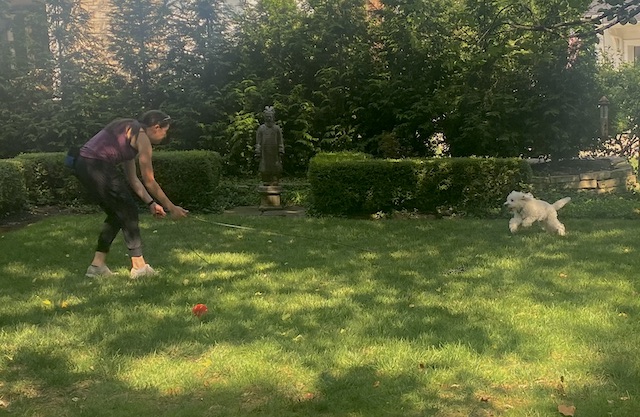
Speed of movement
Along with the direction of movement and your weight distribution, the speed of movement communicates to a dog. A fast movement toward a dog will push them back, spatially, very fast. A quick movement away from a dog will encourage them to move more quickly and lessen the distance between you and them. A slow movement in either direction will produce the opposite effect of a fast motion relative to the direction you are moving. In some ways, you can “dial up” or “dial down” the movement of a dog based on your speed.
Angle of stance
The angle at that you stand communicates a lot to dogs. Dogs will interpret you differently if you face them directly, perpendicularly, or entirely away from them. For those dogs that are a bit more fearful or reactive, directly facing them will likely communicate intimidation and create more severe behavior. The nervous or reactive dogs’ behavior will intensify. Instead, if you stand perpendicularly, you will appear less scary and get a better result. For shyer dogs, if there is no threat of a bite, you can squat down or sit perpendicularly to encourage a dog to interact with you more. Just like a movement away from a dog, this can be particularly helpful for kids with dogs who are less physical or more spatially aware. Turning to the side, squatting down, and speaking happily will communicate to the dog that there is no threat. For the very fearful dog, turning your back entirely might be necessary. Again, with your dog or one that is quite comfortable with a person, the room for error is much larger, and facing them directly is unlikely to cause significant intimidation. In cases where a dog is entirely comfortable, attending to the angle you are oriented is less of a concern.
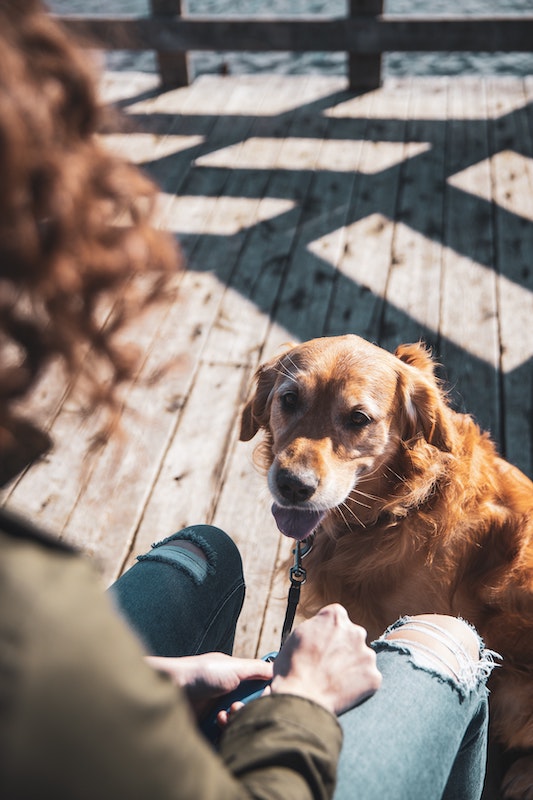
Position
For the more fearful or reactive dog, your positioning can communicate a lot. The most non-threatening positions are lying down or sitting down. Standing can serve as a sign of intimidation for the very timid dog. It is also important to note that a dog may become more concerned when you naturally move from laying or sitting to standing.
Voice
Lastly, your tone of voice and the volume you speak influence your communication with your dogs and others. High pitches tend to come off as friendly, making dogs more excitable. Conversely, a lower tone of voice tends to appear less friendly and can be a correction for dogs. High pitches paired with high volume will create lots of excitability. Low pitches paired with high volume will sound corrective. Remember, when using various tones, it is essential to think about how you want to speak to your dog long-term, and their history with different styles will influence how sensitive they are to high-pitched vs. low-pitched tones. For example, if your dog hears low tones at high volumes regularly, it might be even more difficult for someone with a naturally high-pitched voice to deliver a correction. Conversely, if a dog hears only high-pitched, high volumes, it might be more difficult for someone with a lower tone of voice to encourage excitability. Keep the tone and volume of your voice in mind when delivering commands and praise or reprimands to your dog.
When you communicate with your dog or other dogs, all the aspects mentioned above–facial expressions, the direction of your movement, your position, your angle in that position, and your voice—come together to form a single instance of communication. Dogs, just like us, consider your movements as a whole and decipher your intent. Practicing these various forms will undoubtedly improve your ability to communicate with your dog and others. I use body language daily in practice and at home to help communicate my intent with dogs. What’s even more fun and rewarding than using this knowledge is teaching clients and children how to use these simple methods to yield better communication. The change in your dog’s behavior might surprise you!
